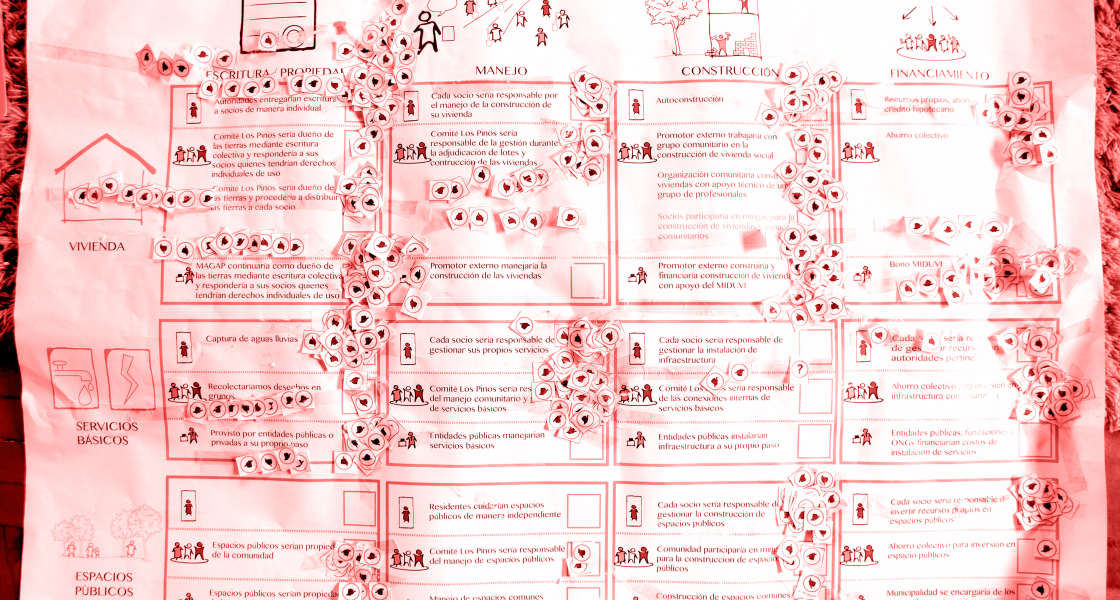Planning option prioritisation tool and graphic trajectory mapping. pdf download
Goal: To capture community members’ preferences for planning and the resulting process.
Audience: Adult residents.
What you need:
– Poster
– ‘Like’ and ‘Dislike’ stickers
– Trajectory board
– Camera
– Notebook
Description
From previous activities related to policy and planning, a series of planning options will have been identified associated with particular issues related to the topic of research eg. ownership, management, construction and finance arrangements (specifically to do with upgrading). In the final exercise of the workshop, individuals are asked to weigh up such options, as a means to reveal the preferences of local residents and discuss with them the reasons for their choices. The process of prioritisation can be done with two activities.
Firstly, facilitators develop a poster that highlights and outlines the different options associated with the issues noted above. Participants are then asked individually to become familiar with the different options noted in the previous exercise. Participants are given 4 ‘like’ and 4 ‘dislike’ stickers. These can then be added to the poster to indicate options that they most and least valued.
Following this, ask participants to identify their trajectory of preferences associated to the same planning options. Apart from exploring individual preferences, this exercise also aims at making participants aware of the various types and modalities of the process for the implementation of the project.
Instructions:
Step 1: Develop the poster.
Step 2: Convene the focus groups.
Step 3: Introduce the different options to participants of each group.
Step 4: Give each participant 4 ‘like’ and 4 ‘dislike stickers and ask them to add these to the options that are most and least valued (they can use all four for just one option or spread them out).
Step 5: Develop a board for participants to draw the trajectory of their choices made in Step 4.
Step 6: Reflect on the various options with participants and make notes of discussions.




